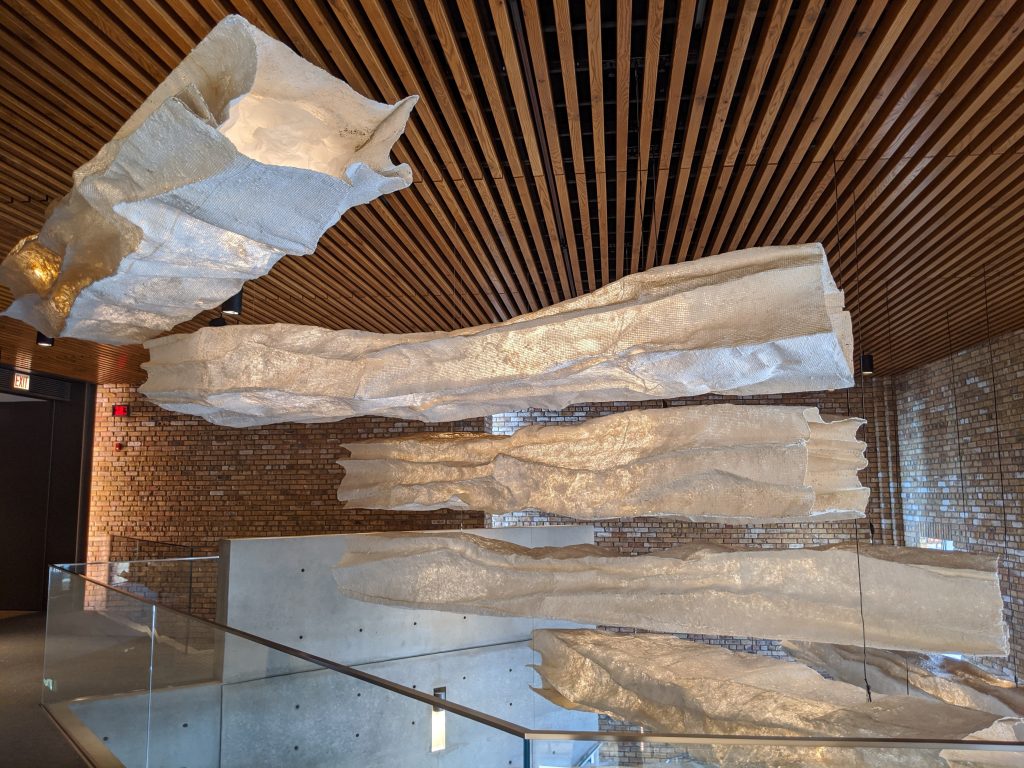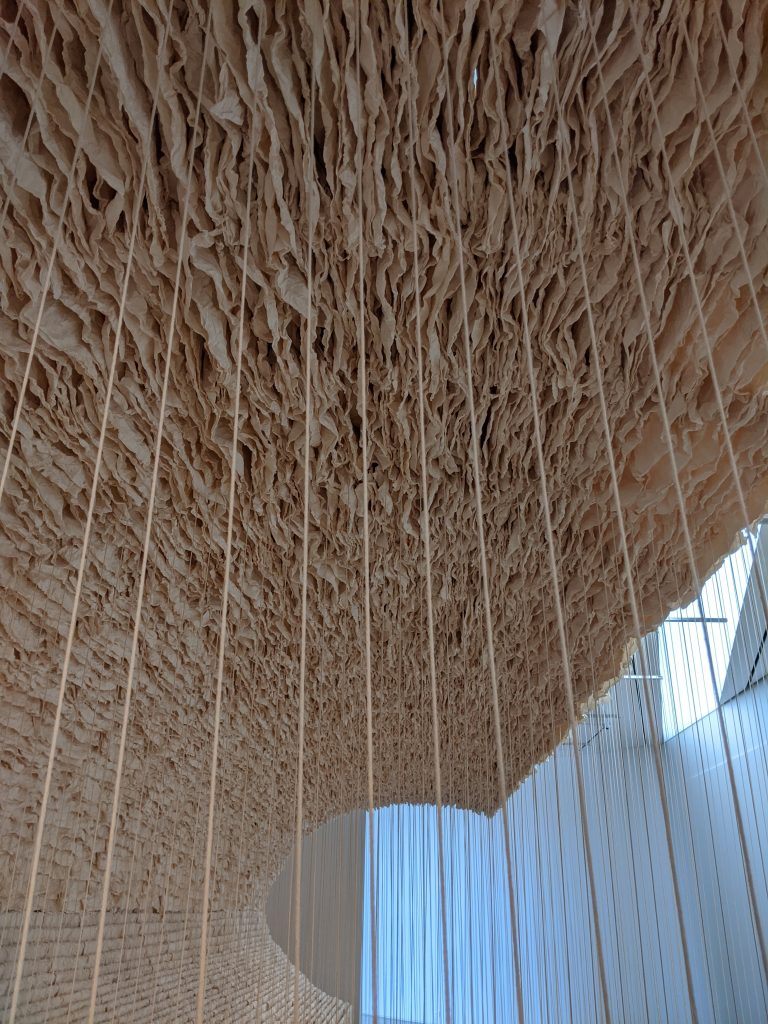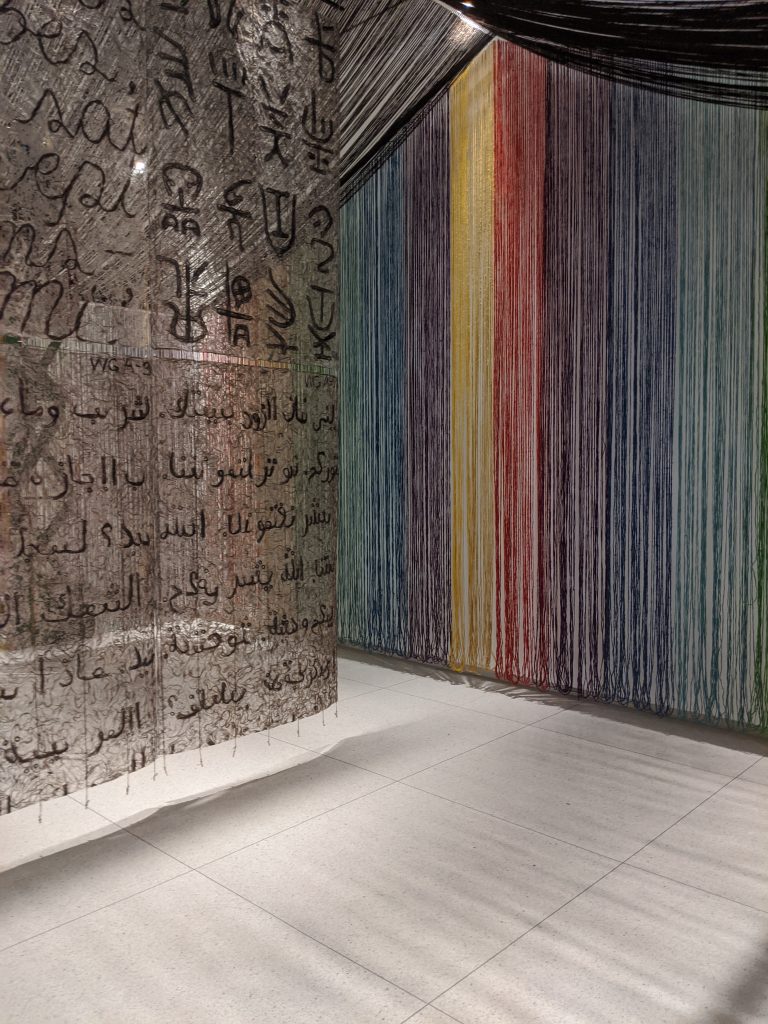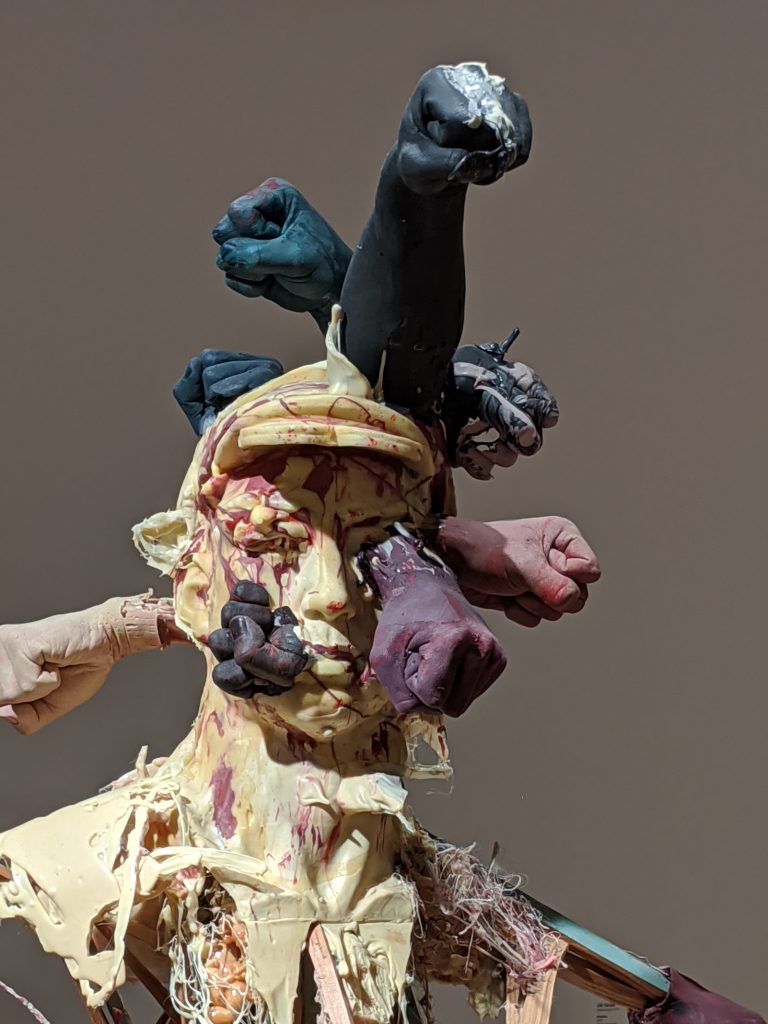
Freedom is one of non-representational art’s most captivating attributes. Free of geographical borders, free of national divides and often not dependent on the specifics of an individual’s origins, it doesn’t depict a place, a person or a thing. As expressions generated purely of the mind, it can represent an idea or a memory. It can be a reaction to an event or a response to a regret.
Material Art fits perfectly in this type of creative universe and a joint exhibit between the Smart Museum of Art on the University of Chicago’s Hyde Park campus and Lincoln Park’s superlative Wrightwood 659 showcase both the verdant imagination and grand dimensions this art form can take.

The exhibit, The Allure of Matter: Material Art from China, shows how 32 artists use different materials, substances and objects to make a lasting visual declaration. Each decides his or her own medium. There are few if any overlaps and their choice of materials can be considered essentially unrestricted: melted plastic, gunpowder, human hair, polyvinyl chloride, paper pulp, incense ash, Coca Cola. Nor are they faced with the limitations of a canvas; freeing their art to be expansive, engulfing, sweeping and imposing to the point of awe.
It’s this propensity for scale that drove the Smart Museum to find a partner and the additional floor space needed to display less than 50 pieces of art. Several of the works qualify as monumental; supporting the artists’ intent that people not only look at but interact with their creations. Not via an electronic touch screen, but by going inside a piece of art and being enveloped by it, like you would with gu wenda’s fanciful and transfixing united nations: american code made of human hair. A trip to the UN in New York prompted him to have a “what if” moment and create a house that represented the idealized global unity embodied in the UN’s mission. And to do so by symbolically using an organic human material to construct it. The true beauty of the piece is both better seen and felt when standing inside this consequence of his imagination.

Other works seem to represent a new level of growth in an artist who’s used the same material in the past but is still pushing the limits of what that compound can do or where it can go. Similar to what Shi Hui has done with Float, a spectacular piece that stirs pure wonder. As organizers point out, placement can be key in helping to absorb and appreciate a work of art. Great care was taken to insure each piece of art in the Allure of Matter show receive thoughtful consideration on how and where it would be placed. That care was evident in many of the works but few equal the breathtaking impact of Float. Hui has used xuan or rice paper pulp in many of her previous efforts, but for Float she spreads it over wire mesh to give it it’s organic shape and places lighting inside the column sized horizontal pillars to give them translucence. Suspended from high above in the tranquility of Wrightwood 659’s atrium, they look like a flotilla of slender asteroids flying in silent formation. Stunning in their seeming weightlessness and ethereal beauty. “Floating” beside the museum’s staircase, they’re visible from every floor. Whether you view them from above, from below or at eye level; they retain the same majesty and sense of peace.

Connecting process and provocation to the completed works of art drives much of the amazement that fills this show. Understanding their genesis and how they were created add another level of beauty to virtually all of them. How does the memory of the smell of tobacco, ingrained in one’s youth, lead to Xu Bing’s, 1st Class, a lavishly sprawling array of a half million cigarettes arranged to look like a massive and opulent tiger pelt decorating a floor? In this exhibition, tying concept to execution can effectively leave one speechless and eager to see what other revelations and treasures lie around the next corner.
Some pieces are made solely by the individual artist; others, like He Xiangyu’s A Barrel of Dregs of Coca-Cola, a commentary on the entry and impact of the soft drink on China and its link to loneliness, enlist the resources of a small army.
All of the works were created by Chinese artists after the 1980’s. Few of the works are visually anchored in place and offer visual reflections of traditional Chinese culture. But those that do are immensely powerful. When viewed in its entirety, The Allure of Matter reaffirms the depth and global reach of contemporary art and allows arts enthusiasts in this country to see, and revel in, how closely it’s all related.
Conducted primarily in Hyde Park, extensive programming supporting the exhibit will run through April. Details can be found in the calendar at theallureofmatter.org.
The Allure of Matter
Material Art from China
February 7 – May 2, 2020
Smart Museum of Art
5500 S. Greenwood Ave
February 7 – May 3, 2020
Wrightwood 659
659. W. Wrightwood Ave.
theallurofmatter.org